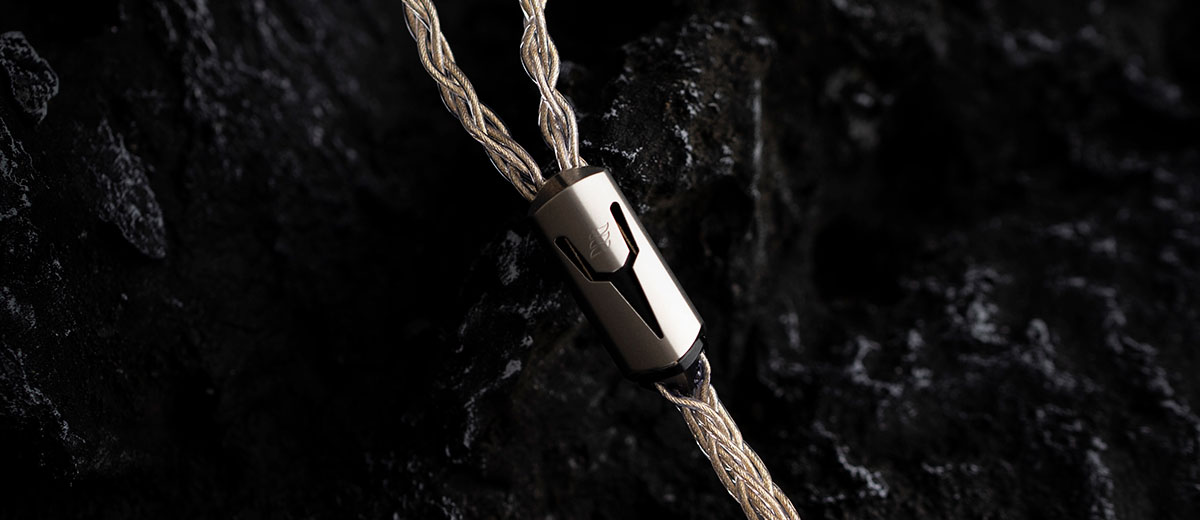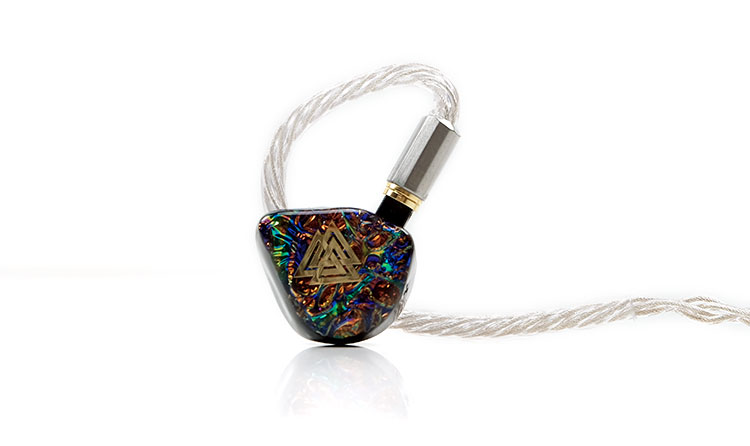Accessories & Packaging
It is probably quite fair to say that the Centurion packaging is one of the most ambitious and carefully thought out retail ensembles for aftermarket IEM cables I have seen to date.
Not only do you get a fairly sizeable and grandiose multi-package delivery but you also get a locally crated and very unique-looking carry case and an additional display stand for the Centurion.
Unfortunately, my own external packaging for review purposes is a bit more spartan but once everything you see below arrives I will update it with real-world pics.
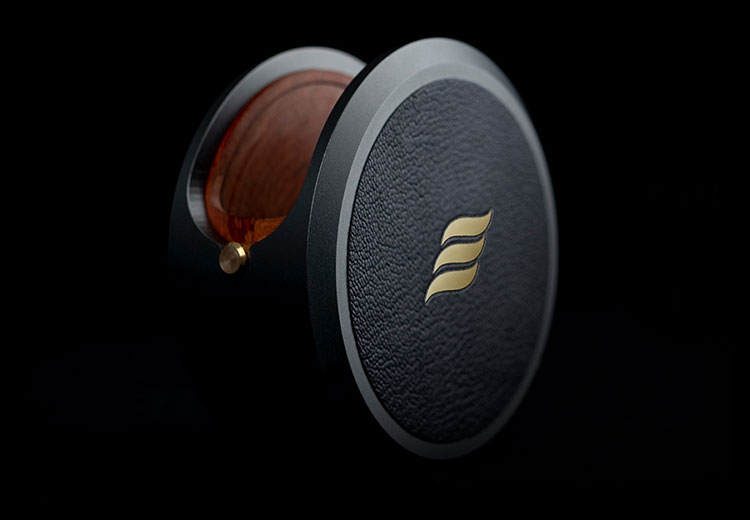
Case
The case is actually a locally commissioned project via J. Myers which is a Singapore leather artisan company rather than any OEM adapted faux leather case so yes, it’s real leather and yes it’s quite unique.
Instead of one single leather case, this is a two-piece mix of carved rosewood, leather inner and outer, and an aluminum alloy shell in a black and deep wood grain finish. The internal rosewood chamber is articulated with a small grippy brass knob to allow you to rotate it from open to closed inside the main plastic outer shell.
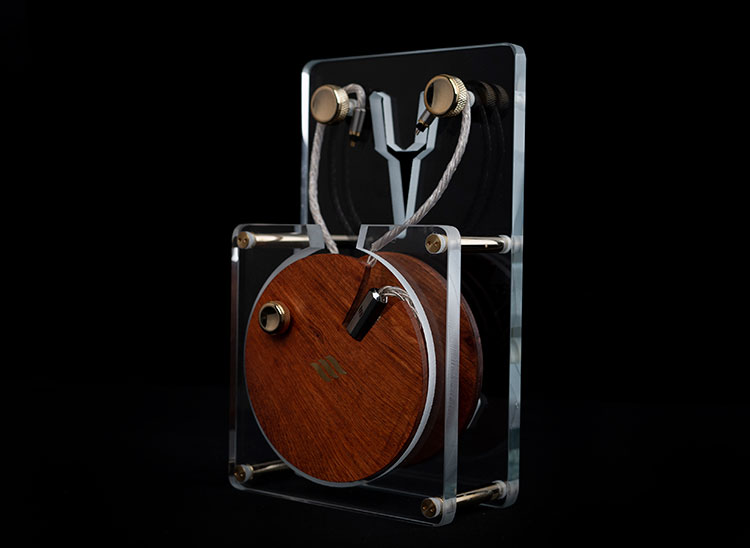
Stand
The display stand is made from two pieces of glass with attractive gold knurling joints and hooks that are designed to elevate your cable in a clean presentation manner. There is also a fixed rosewood circular case behind a protective second glass layer at the base of the stand.
This rosewood circular base rotates via another gold knurling knob on the front plate so you can feed the Centurion inside like a reel. This allows you to pack it cleanly with just enough length at the top to rest the connectors on the two hooks at the top of the rear glass plate.
Performance Impressions
Summary
The Centurion could almost be described as a perfect union of Code 51’s power and Horus X’s expansive and articulate performance. I have almost called it the Code X a few times in discussions as a result.
But this is not just a simple hybrid of what has gone before because throughout there is a question of dynamic range with the Centurion delivering possibly one of the best dynamic range performances I have heard to date from an Effect Audio cable.
For example, the solidity of Code 51 bass performance on dynamic drivers now becomes a complex layered treat with the Centurion. You can easily pick out a fast-attacking mid-bass punch riding over any underlying sub-bass rumble rather than one continuous loud thud or a huge bass ‘blob’.
Owners of the Odin and Elysium will get immediate benefits from the Centurion’s synergy. Particularly in how well it teases out Odin’s dual Weapon IX+ layering and enhances the stereo imaging on the Elysium, even when compared to the excellent Code 51.
Midrange instruments and vocals also reap some reward sounding more physical and solid compared to the slightly softer ethereal delivery of the Horus X. It is a bit of an overused description but the phrase “they seem to leap out at you’ feels rather apt here.
Mix that in with a complex tall and wide soundstage from a truly capable monitor and the Centurion will deliver an incredibly immersive or vivid performance.
Staging
I generally like to tackle any coloration changes before staging tweaks but I think the Centurion’s performance requires us to stop off here first.
You will pick up immediately just how much clarity the Centurion can squeeze out of a monitor’s top-end when comparing it to EA’s previous TOTL cables. It was literally the first thing that leapt out at me when paired with 64 Audio U18s and tia Trio in terms of just how much headroom and upper treble extension came shining through.
In turn, this gives airy spatial cues that had maybe a little softness on the Code 51 a bit more of a lift and shimmer thus making them much easier to pick out.
The further out these cues are the wider the perceived stereo image, at least for me personally. The Elysium was one such monitor that seems to pick up on that quite easily, I suspect due to the electrostatic drivers which really came alive with the Centurion pairing.
The sense of space was equally palatable on the low-end also with our test monitors. Not so much in the absolute quantity levels but rather in how well the bass performed in terms of layering and definition right down to any sub-bass notes. The easier it is to pick out these notes, as they were with the Centurion, the stronger the sense of depth became.
And yes, midrange clarity, instrumental separation, and vocal presence all benefitted, especially when compared to the Horus X. The X does really well in terms of articulation but it is a slightly softer sound with a lighter bass fundamental so midrange notes don’t hit with the same weight or have the same impact and presence.
Timbre
For those moving from Code 51, you might find the Centurion to offer a bit of a lift in terms of odd harmonic influence in your monitor’s timbre. Not to say the Centurion is a bright cable but rather it’s got a bit more energy throughout and that includes both the treble and bass response.
Compared to the Leonidas II Octa, for instance, it does have more top and low-end presence so there is a bit more contrast in our monitor’s timbral coloration through the mids. Vocals are a bit cleaner, more precise, and lively sounding, and instruments have a more planted feel. It is a bit like comparing a good tube amp against a TOTL solid-state amp in many ways.
That lift also brings in plenty of power so dynamic driver hybrids are going to sound weighted with a more physical characteristic to note timbre and less ‘gooey’ softness. An accurate harmonic tone without being too dry was my continual thinking when testing the Centurion pairing with the likes of King Arthur and the Odin.
Synergy
Testing was done on several different monitors of variable value but largely a mix of TOTL and monitors I believe have a strong technical capability.
This is where I believe the Centurion will perform at its best. Monitors that can maximize its ability to tease out an excellent dynamic range performance level and a very expansive soundstage are ideal.
King Arthur
Personally, I think the Centurion is a no-brainer for King Arthur owners with deep pockets, particularly if you happen to have several other TOTL monitors lying around and can use one cable to service them all.
The stock Arthur Caliburn is an excellent cable in its own right but swapped to the Centurion and you do get a lift in the treble response and better dynamic range that teases out a more satisfying level of midrange clarity.
That enhanced treble will shine a light on subtle spatial cues that might get missed with the warmer Caliburn performance so the perceived stereo imaging will also seem taller and wider with the Centurion tied to the Arthur.
Mids are also airier, less veiled sounding, and with a more accurate harmonic balance. The dynamic range on the low-end is much better also with notes sounding more physical, more immediate, and with better separation. There is not a huge change in the quantity levels from the Caliburn pairing, rather it sounds more vibrant and attention-grabbing.
Empire Ears Odin
The Odin was absolutely stunning with the Centurion, perhaps the most dynamic cable/monitor pairing from this review. The Odin always had the technical chops but with the Centurion the dual Weapon IX+ drivers sounded so incredibly precise, fast, and chock full of character.
By character I mean you can pick out the layering so easily be it a fast mid-bass punch or that quality slower-paced sub-bass rumble underneath. The Centurion teases out both and won’t allow them to merge together into one huge blob.
Upper treble might be more prominent than softer sounding pairings such as the Leonidas II Octa. However, the Centurion’s enhanced top-end will not inject too much ‘spice’ into those forward upper-mids of the Odin.
Higher-pitched vocals sound crystal clear on the Odin/Centurion pairing with tons of space to breathe. They also have a nice sense of physicality and additional presence rather than being hot and sibilant.
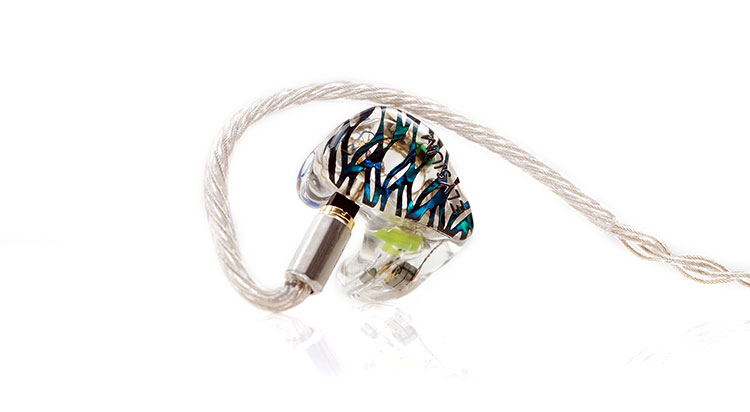
Vision Ears Elysium
This is one pairing where you can show the benefits of the Centurion over Code 51. I always felt Code 51 was a great pairing with the Elysium due to its excellent solidity on the low-end that helped push that single BA driver.
However, the Centurion really fleshes it out even more with some impressive dynamic range and increased perceived slam. It is more in your face but at the same time more articulate and not a mushy warmed-up performance either.
The Centurion will also make those electrostatic drivers really sing, more so than Code 51. The extension and presence right at the top come out a bit more and in doing so that sense of space and headroom on the Elysium is further enhanced.
Compared to Code 51 pairing, the stereo imaging is wider on the Elysium with the Centurion, particularly through the mids. Distant softer spatial cues get some additional brilliance that makes them a lot more distinct.

